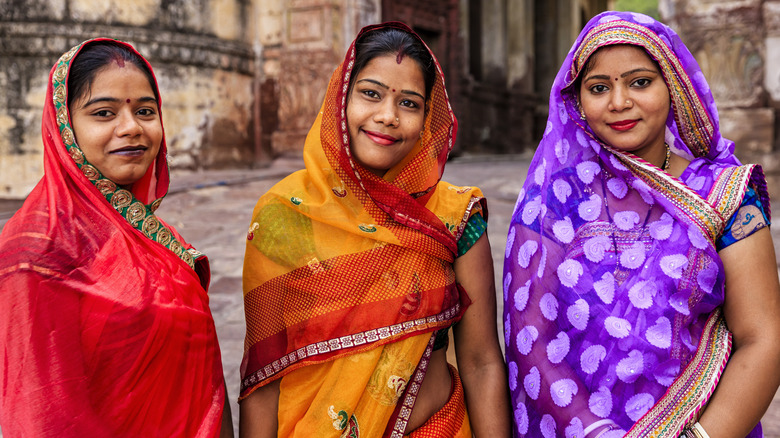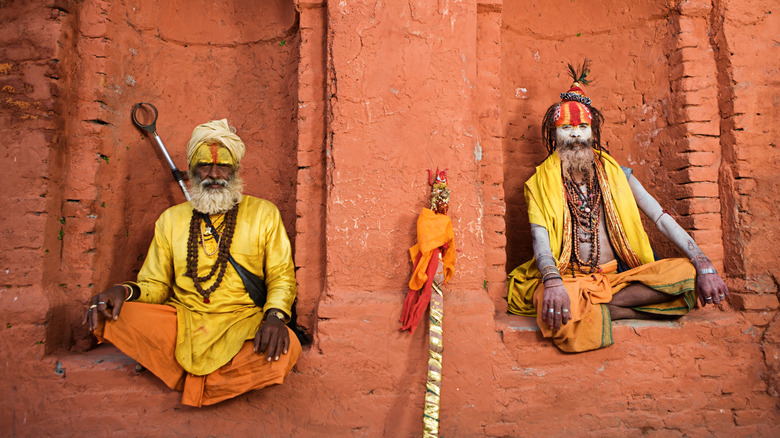How To Be A Respectful Tourist When Visiting India
Explorers looking for a place that's as diverse in modern marvels as it is rich in ancient history will find it waiting in India. Home to over 1.4 billion people according to Worldometer, India hosts stunning landscapes ranging from plains and mountains to captivating coastlines. A trip to India is an opportunity to encounter unique contrasts between bustling metropolitan areas and rural communities. Bold flavors, a culture of deep spirituality, and a complex colonial history combine to make India a place where there's something new to discover with every visit.
When you're a visitor, knowing how to be a respectful tourist can make a big difference. The good news is you likely won't be called out on a social misstep here unless it's in a religious setting. That said, being a respectful tourist means making an effort to understand local and cultural norms. This will inevitably make it easier for you to connect authentically with people and places along the way. It also makes you a great ambassador for your home country.
An important cultural expectation to keep in mind when you visit India is that public displays of affection should be avoided. The same goes for acting aggressively in public spaces, on crowded buses, or trains. While you might see side hugs or hand-holding between individuals of the same gender, this is typically the most that would be considered acceptable out in public.
Planning your wardrobe and conversing with locals
Many who travel internationally to India wonder about what type of clothing they should pack for the journey. The best course of action, when you're looking to lean into cultural norms, is to dress relatively modestly while you're in the country. For men and women alike, this can mean packing apparel that covers the arms and legs and opting for loose-fitting pieces as well. Feel free to dress fashionably modern in urban areas but if you're spending time in rural communities, it's perfectly acceptable for tourists to don traditional Indian apparel such as a salwar (light trousers), kurta (a loose shirt), and sari (a garment that is worn draped around the body).
When addressing people throughout India, using the prefixes "sir" and "madam" is considered respectful. This is particularly important when addressing the elderly in a formal situation. In the event you're invited to someone's home, do remember to remove your shoes before entering as a sign of respect. If you happen to see signage outside of a store with a pair of shoes on it, this indicates that you'll need to remove your shoes before entering the establishment as well.
In Indian culture, it's common for someone in a conversation to tip their head from one side to the other as the other person speaks. This can be confusing to visitors the first time they observe it. However, it's simply an indicator that the person you're conversing with understands what you're saying or agrees with your statement.
Other things to keep in mind
India is brimming with dazzling cityscapes and colorful landscapes to enjoy. If you're longing to capture it on camera and your angle includes people, be sure to ask permission first. This is particularly important when children are photographed in urban settings. If street musicians or performers allow you to take their photos, you should expect to give them a small fee in return.
A highlight for many visitors heading to India is the opportunity to visit the country's stunning collection of Hindu and Buddhist temples. While the experience is moving, there are a few important things to remember. Do be sure to keep your shoulders covered, remove your shoes, and wash your feet before entering.
In general, your shoes and your feet are considered unclean throughout India. The left hand is also considered unclean in India, so it's best to pass food or objects to others using your right hand. If you accidentally touch someone with your feet while walking through a crowded public space or temple, it's a good idea to apologize as quickly as possible.
In temples, rules regarding where you directionally place your feet are more specific too. It is considered rude to point the bottom of your feet toward others or at religious altars. It's equally inconsiderate to sit with your back facing a religious statue. To avoid any uncomfortable situations, plan to sit cross-legged whenever you're observing the interior of a temple.


